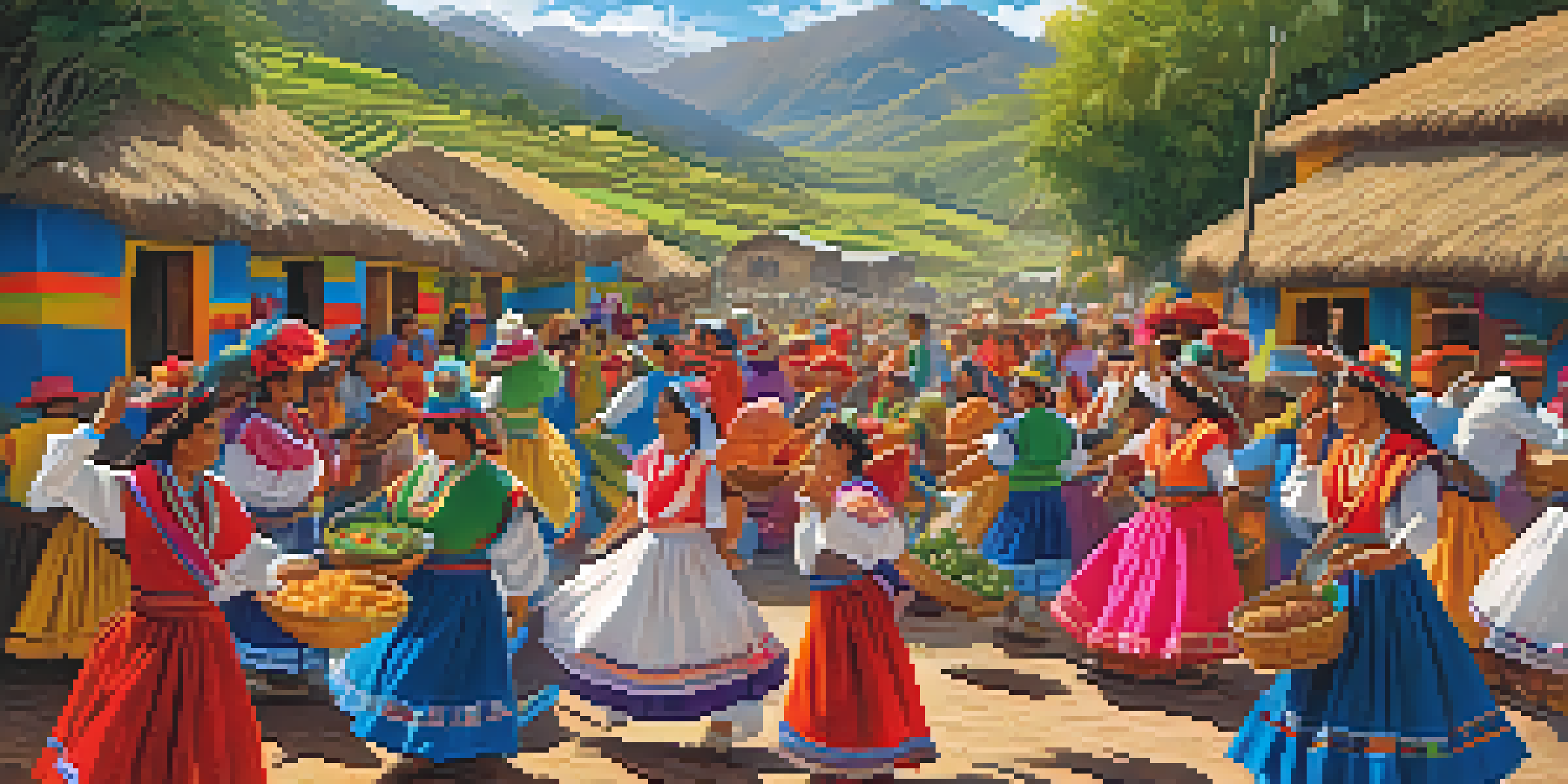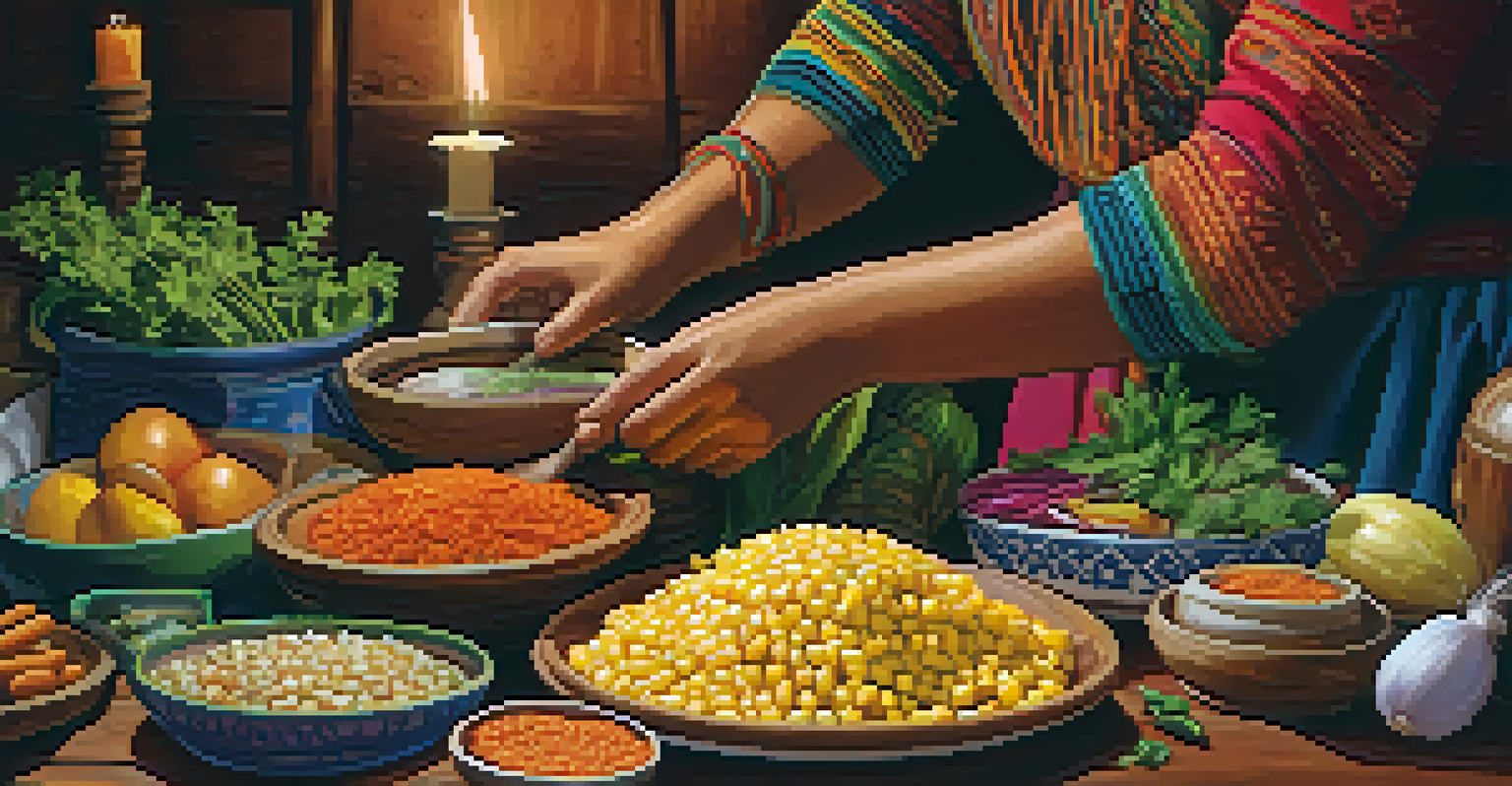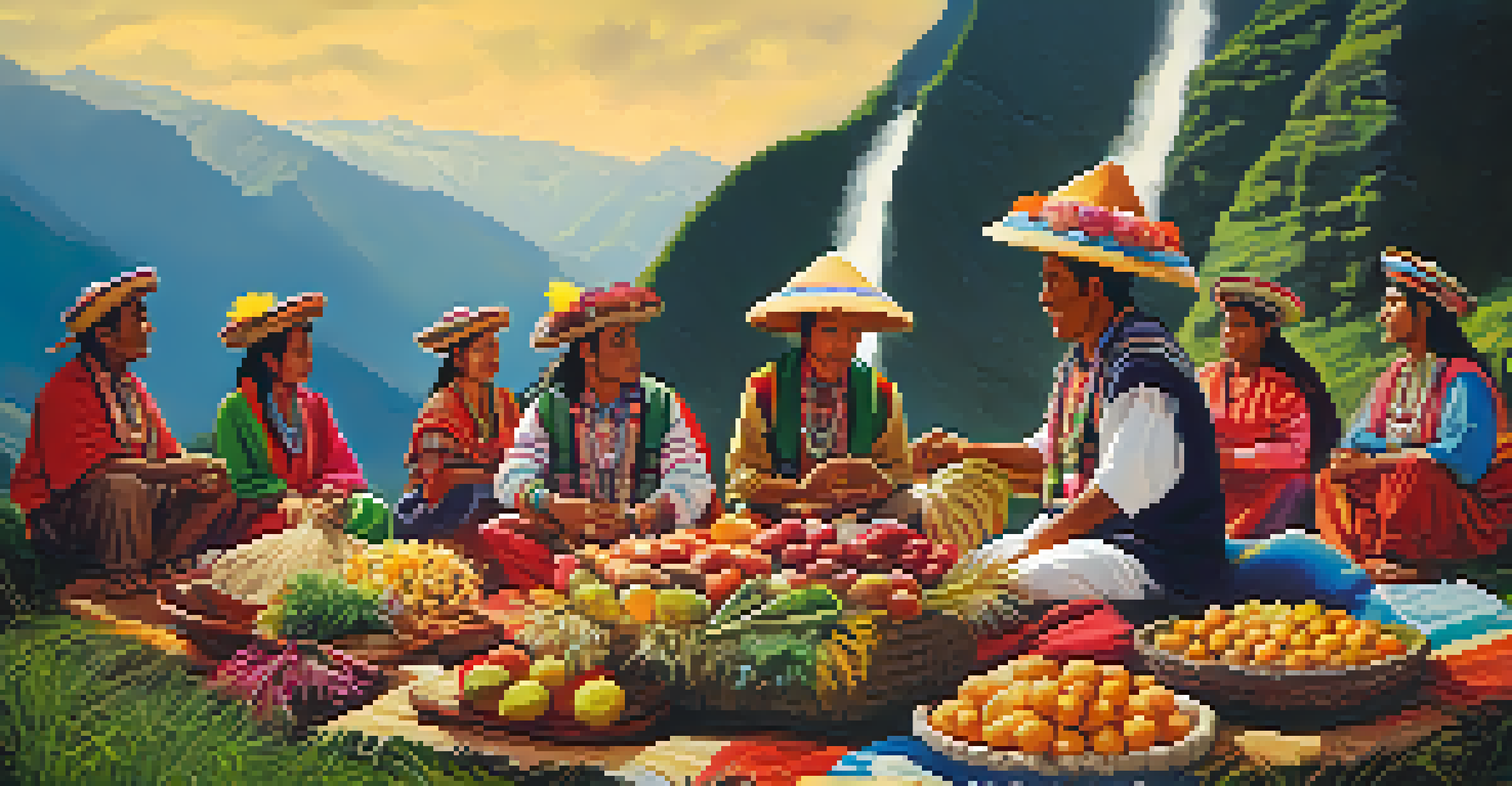The Importance of Harvest Festivals in Peru's Culture

Understanding the Roots of Harvest Festivals in Peru
Harvest festivals in Peru are rich in history, deeply rooted in the agricultural practices of indigenous peoples. These celebrations often coincide with the end of the harvest season, marking a time of gratitude and reflection. Historically, they were opportunities to honor Pachamama, or Mother Earth, for her generosity in providing bountiful crops. Through these festivals, communities come together to celebrate their shared heritage and the importance of sustainable farming.
Agriculture is our wisest pursuit, because it will in the end contribute most to real wealth, good morals, and happiness.
In many Andean regions, these festivals are not just about food; they are vibrant displays of local culture. They showcase traditional music, dance, and attire, illustrating the unique identities of various communities. For instance, the Inti Raymi festival in Cusco celebrates the sun god with a colorful procession that includes llamas and offerings. This blend of spirituality and festivity highlights how intertwined agriculture is with cultural expression in Peru.
Moreover, these events serve as a reminder of the agricultural calendar and the cycles of nature. They create a sense of rhythm in life, prompting communities to work together, prepare, and celebrate collectively. By participating in these festivals, people nurture not only their crops but also their relationships with one another, reinforcing a sense of community that is vital in today’s fast-paced world.
The Role of Community in Harvest Festivals
At the heart of Peru's harvest festivals is the spirit of community. These events bring together families, friends, and neighbors, reinforcing social bonds that might otherwise weaken. With shared meals, music, and dance, attendees create lasting memories that strengthen ties within the community. This collective involvement fosters a sense of belonging that is essential for social cohesion.

During these festivals, local artisans often showcase their crafts, allowing attendees to support their economy. By purchasing handmade goods, festival-goers contribute to the sustainability of local businesses and keep traditional art forms alive. This economic aspect of harvest festivals not only benefits individuals but also enriches the entire community, creating a cycle of support and creativity.
Community Bonds in Festivals
Harvest festivals in Peru strengthen social ties through shared meals, music, and cultural traditions.
Additionally, the festivals serve as a platform for passing down traditions from one generation to the next. Elders share stories and rituals with younger members, ensuring that cultural knowledge and practices endure. This exchange fosters a sense of identity among the youth, who learn to appreciate their heritage and take pride in their community's uniqueness.
The Spiritual Significance of Harvest Festivals
Many harvest festivals in Peru are steeped in spirituality, often featuring rituals and offerings to honor deities. For indigenous communities, these practices are a vital part of expressing gratitude for the land's fertility and abundance. Participants may offer food, flowers, or even music to Pachamama, demonstrating respect for the earth and its cycles. This connection to nature imbues the celebrations with a deeper meaning beyond mere festivity.
The culture of a people is the culture of the land they inhabit.
The spiritual aspect also brings together people of various backgrounds, uniting them in a common purpose. Whether one identifies as a believer or simply appreciates the beauty of the rituals, everyone can participate in the communal experience. This shared spirituality fosters understanding and respect among diverse cultures, reinforcing the importance of harmony in society.
Furthermore, these spiritual practices encourage mindfulness and reflection. As attendees engage in traditional rituals, they are prompted to consider their role in the environment and the impact of their actions. This awareness can lead to a more sustainable lifestyle, as individuals recognize the importance of preserving their natural resources for future generations.
Culinary Traditions in Harvest Festivals
Food is a central theme in Peru's harvest festivals, highlighting the region's diverse culinary heritage. Traditional dishes often feature locally sourced ingredients, showcasing the bounty of the season. For instance, dishes like pachamanca, a type of underground roast, are prepared and served during these celebrations, symbolizing the earth’s gift. This emphasis on local cuisine not only delights the palate but also reinforces the importance of sustainable farming practices.
Moreover, sharing meals during these festivals fosters a sense of unity among participants. Families come together to prepare and enjoy food, creating an atmosphere of warmth and camaraderie. This communal dining experience is a powerful reminder of the role food plays in connecting people and cultures, transcending barriers and celebrating shared values.
Spirituality and Nature Connection
These festivals involve rituals honoring Pachamama, emphasizing gratitude for the earth's fertility and promoting a deeper connection to nature.
Additionally, culinary traditions serve to educate younger generations about their heritage. Recipes and cooking techniques passed down through families highlight the significance of local ingredients and traditional practices. As children learn to prepare these dishes, they gain a deeper appreciation for their culture, ensuring that the culinary legacy continues for years to come.
The Impact of Modernization on Harvest Festivals
As Peru continues to modernize, the traditional harvest festivals face both challenges and opportunities. While some communities may adopt new technologies and practices, there is a risk of losing the unique customs that define these celebrations. However, many regions are finding ways to blend modern influences with traditional practices, creating festivals that honor the past while embracing the future.
For example, social media has become a powerful tool for promoting and revitalizing harvest festivals. Communities can share their events with a broader audience, attracting tourists and fostering a renewed interest in local traditions. This exposure not only boosts the local economy but also encourages younger generations to engage with their heritage, ensuring that these cultural practices remain vibrant.
Despite these positive developments, it is essential to strike a balance between modernization and tradition. Communities must remain vigilant in preserving the core values and practices that make their harvest festivals unique. By doing so, they can ensure that these celebrations continue to thrive, reflecting the rich tapestry of Peru's culture for generations to come.
Preserving Cultural Heritage Through Festivals
Harvest festivals are crucial in preserving Peru's rich cultural heritage. They act as living museums, where traditions, music, and dances are performed and celebrated in real-time. This vibrant expression of culture not only educates participants but also captivates visitors, fostering a greater appreciation for Peru's diverse history. By participating in these festivals, people help keep these traditions alive and relevant.
Additionally, many communities actively work to ensure that their harvest festivals are inclusive and representative of their history. This means engaging with different cultural groups and ensuring that their unique contributions are acknowledged and celebrated. By promoting inclusivity, these festivals become richer and more complex, reflecting the diverse narratives that form Peru's identity.
Culinary Heritage and Education
Peru's harvest festivals celebrate local cuisine, educating younger generations about their cultural heritage and the importance of sustainable practices.
Furthermore, educational programs often accompany these festivals, teaching participants about the significance of various customs and practices. Workshops, demonstrations, and storytelling sessions provide deeper insights into the cultural context of the celebrations. This commitment to education ensures that attendees leave with a greater understanding of the traditions, fostering a sense of responsibility to uphold them.
The Future of Harvest Festivals in Peru
Looking ahead, the future of Peru's harvest festivals seems bright, thanks to the dedication of communities committed to preserving their traditions. With a growing interest in sustainable agriculture and cultural heritage, these festivals are likely to continue evolving while remaining true to their roots. They will serve as a reminder of the importance of community, spirituality, and environmental stewardship.
Moreover, as globalization connects people worldwide, harvest festivals may gain even more visibility and appreciation. This exchange of cultural practices can lead to a greater understanding of the significance of agriculture in various societies, reinforcing the value of local traditions. As Peru shares its harvest festivals with the world, the richness of its culture will shine even brighter.

Ultimately, the survival of these festivals depends on the collective efforts of communities, local governments, and cultural advocates. By prioritizing the preservation of traditions and embracing innovation, Peru can ensure that its harvest festivals remain a vibrant celebration of life, culture, and togetherness for generations to come.